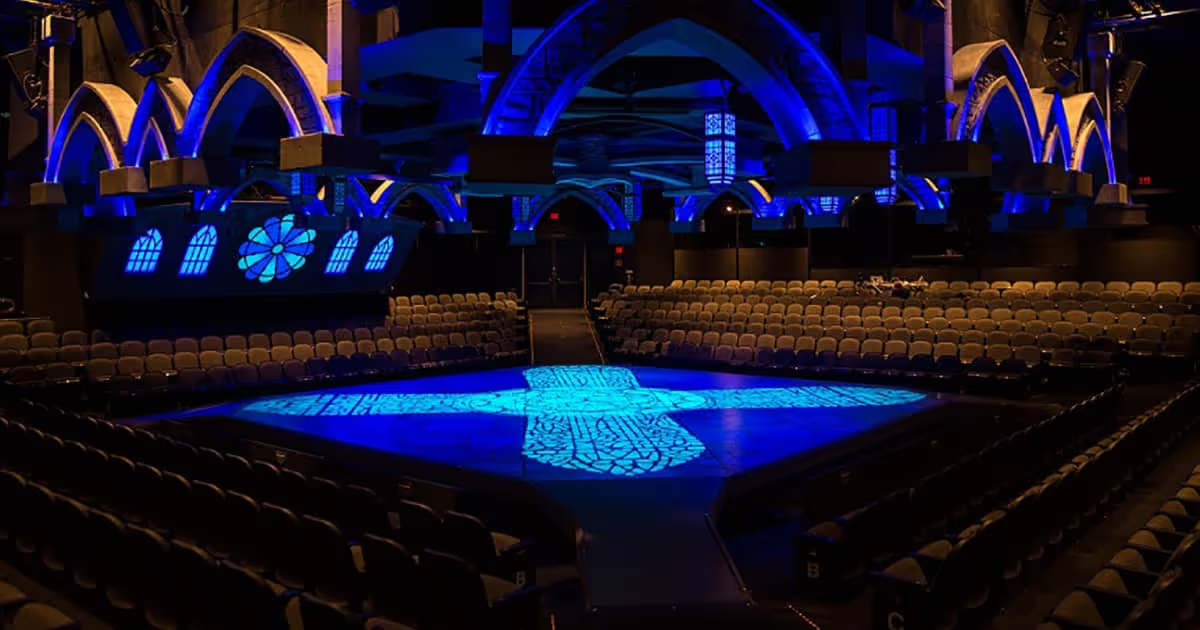The hits and the hitmakers keep rockin’ in marvelous ‘Million Dollar Quartet’
★★★1⁄2
If rock and roll has played any part in the soundtrack of your life, you will be reminded why by the cast — and the song list — of the Marriott Theatre’s “Million Dollar Quartet.” Packed with almost two dozen hits made famous by Elvis Presley, Johnny Cash, Carl Perkins and Jerry Lee Lewis, the show is killer.
So is the attitude emanating from the actor/musicians channeling those rock-and-roll icons — a bunch of audaciously ambitious upstarts dead-certain they’re going to change the world. And as history unfolds, they do, of course. Director James Moye’s staging makes that ridiculously obvious.
“Million Dollar Quartet” with a book by Floyd Mutrux and Colin Escott, is inspired by a Sun Records recording session in 1956 when producer Sam Phillips (David Folsom) brought together Presley (Rustin Cole Sailors), Perkins (Shaun Whitley), Lewis (Nat Zegree) and Cash (Christopher J. Essex) into his Memphis studio for one night of music. In all, it’s a breathless 90 minutes that feels faster than a three-minute charttopper.
Everybody gets a showstopper, but the showstopping-est numbers belong to Zegree’s Lewis. He leaps over the piano like it’s a hurtle at a track meet, playing the whole time, never missing a beat. He plays while doing a handstand on top of the keys (a short one, but still). He is never still, jumping and twitching like boll weevils in high cotton, and he pulls it off without making any of it seem like a stunt. It’s not just energy; there’s urgency to Zegree’s Jerry Lee. He plays like he’s running out of time.
You find out why when Jerry Lee delivers a mini-sermon. Rock, he bellows like some backwoods Southern trial lawyer, is about three things: Fornication, temptation and damnation. Listen to it, and you’re damned to a million years in hell. Play it, you’ve got a million more. The moral is obvious. Go grab you some glory before you’re bubbling in the brimstone. When Zegree takes the sermon home with “Great Balls of Fire,” you can feel the Holy Ghost shaking his almighty fist.
Speaking of which: The thunder, which Essex-as-Cash brings to “Folsom Prison Blues,” is explosive enough to drown out a train rollin’ round the bend. Like Cash, Essex’s sonorous bass sounds like it’s rising up from the depths of the earth. When he dips into the chasm to close out “Sixteen Tons,” it’s with a richness and clarity worthy of the Man in Black.
As Presley, Sailors keeps the swagger fresh.This is early Elvis, his infamously rotating hips clearly an act of rebellion. “Hound Dog” feels like a newly discovered anthem of empowerment, with Presley shaming the low-down, dirty dogs of the world with a snarl and a song.
Which bring us to Whitley as Perkins, the author of “Blue Suede Shoes.” He’s glowering with rage because Elvis made the song his own by performing it on national television. Whitley is all barely-contained anger until it’s time to jam. When he takes it out on “Who Do You Love” and “Matchbox,” it’s clear he’s Elvis’ match. And that makes you wonder what might have been if Perkins had gotten on TV first with “Blue Suede Shoes.”
The cast also includes Laura Savage as Elvis’ lady friend Dyanne. Her “Fever” confirms the worst nightmare of every rock and roll-hating parent of the Eisenhower Era. Sporting a dress that would be inside out if it were any tighter, (nice work by costume designer Theresa Ham) Savage’s “Fever” makes it unapologetically, unmistakably clear that the song is a vertical expression of the horizontal desire.
Rounding out the band is Zach Lentino as and Kieran McCabe as Brother Jay and Fluke, respectively, the bassist and drummer for the recording session. Lentino takes that bass to the woodshed, slapping the strings within an inch of their lives. McCabe provides the percussive foundation that keeps the show’s volatile stars from running the train right off the tracks.
Finally, there’s Folsom’s Phillips, the man who brought the whole band together. It’s almost a throw-away role; mostly he’s responsible for filling in the gaps in exposition. But he’s believable as a man willing to put everything on the line for his stars.
Music director Ryan T. Nelson and sound designer Robert E. Gilmartin are indispensable. Compared to the tiny Sun Studios, the Marriott Theatre is cavernous, yet the sound never gets swallowed up by the space. That’s some kind of sonic sorcery. It makes you see — or rather hear — that “Million Dollar Quartet” is not hyperbole.











